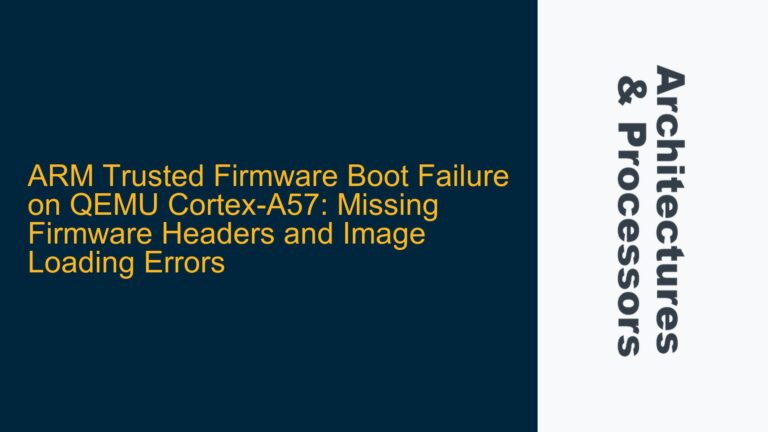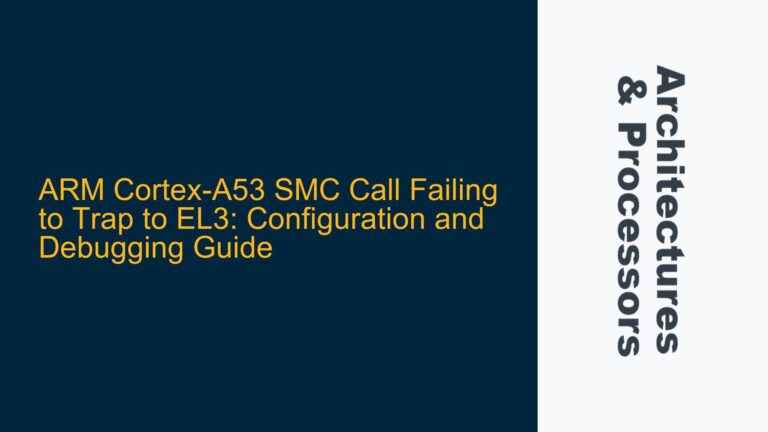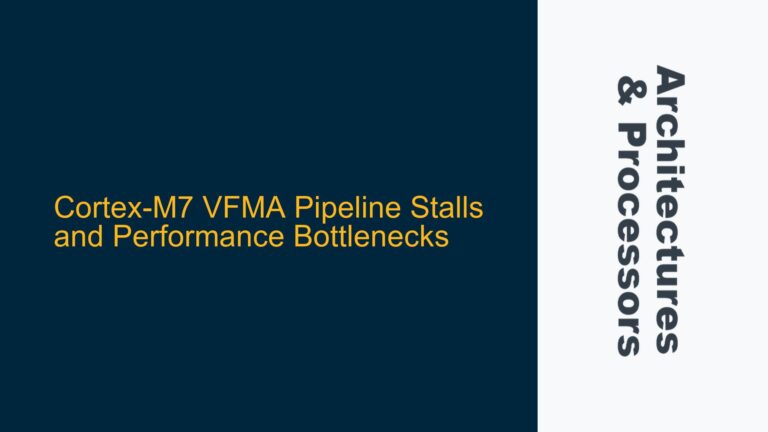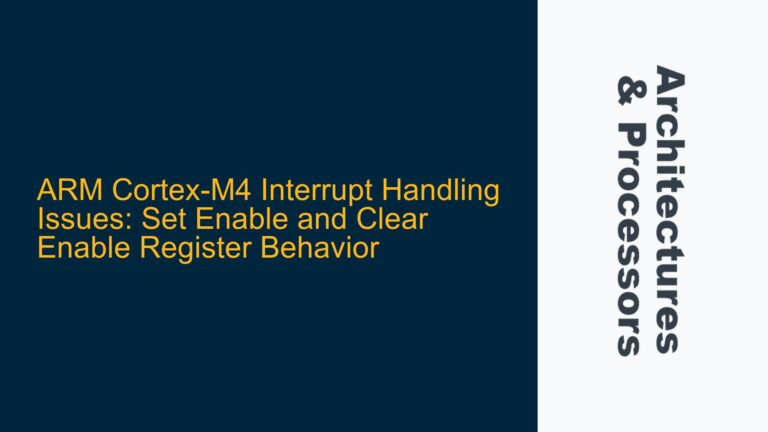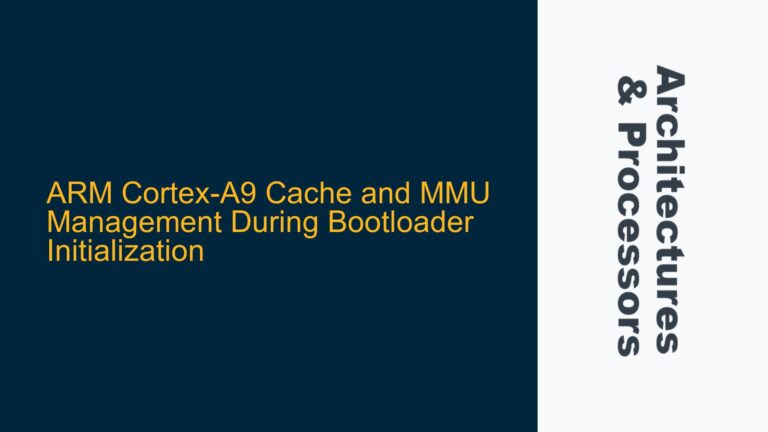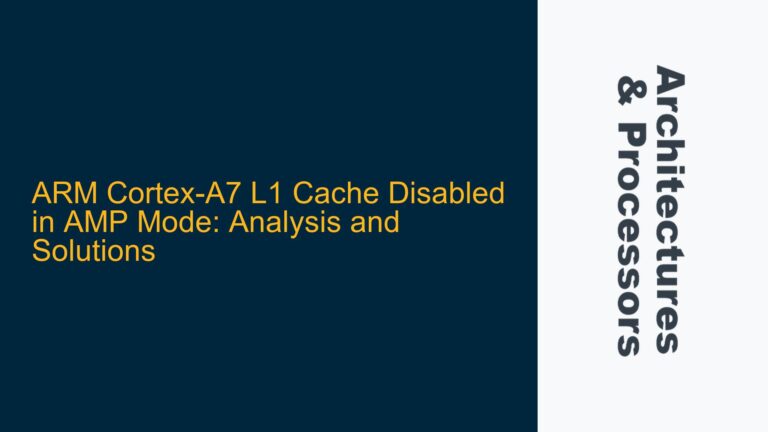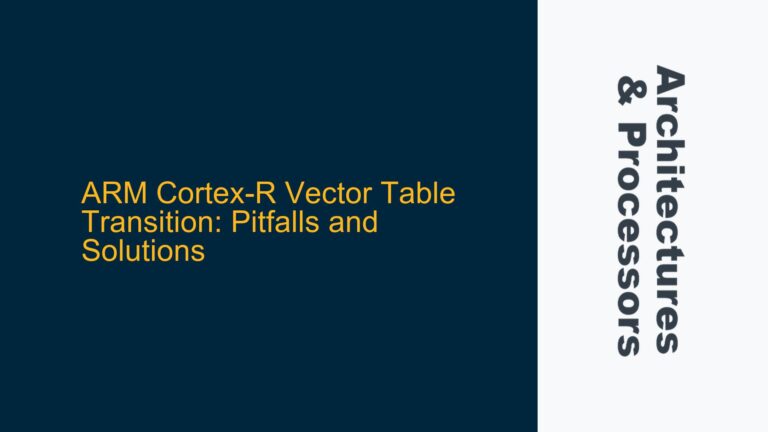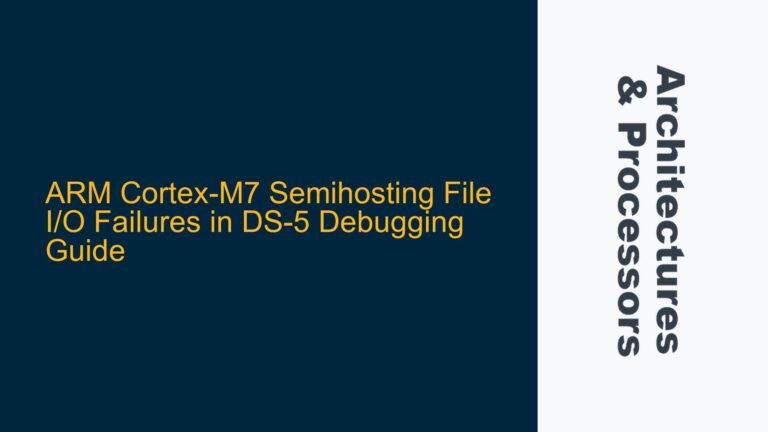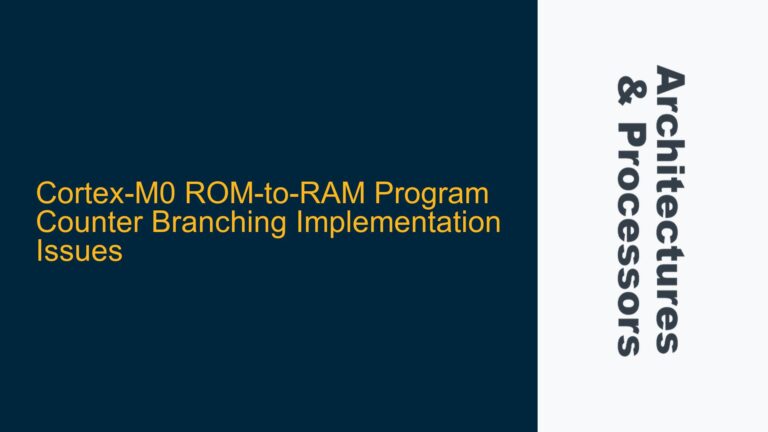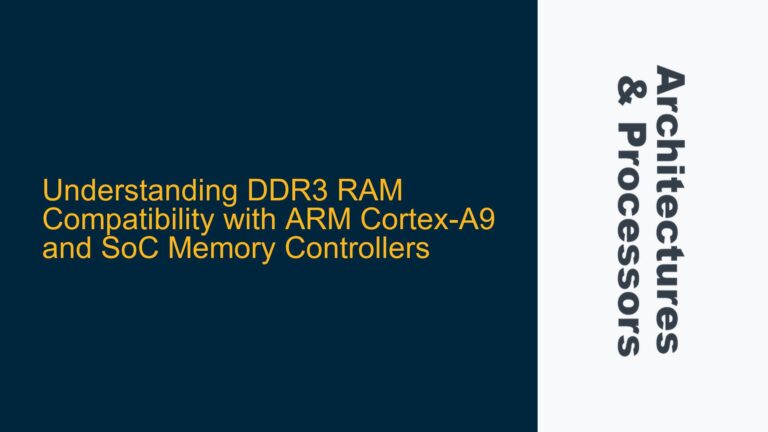ARM Trusted Firmware Boot Failure on QEMU Cortex-A57: Missing Firmware Headers and Image Loading Errors
ARM Trusted Firmware Boot Process and Cortex-A57 Workarounds The issue revolves around the failure to boot ARM Trusted Firmware (ATF) on a QEMU virtual machine emulating a Cortex-A57 processor. The user is attempting to run bare-metal firmware at Exception Level 2 (EL2) using ATF to manage multi-core bootstrapping via the Power State Coordination Interface (PSCI)….
